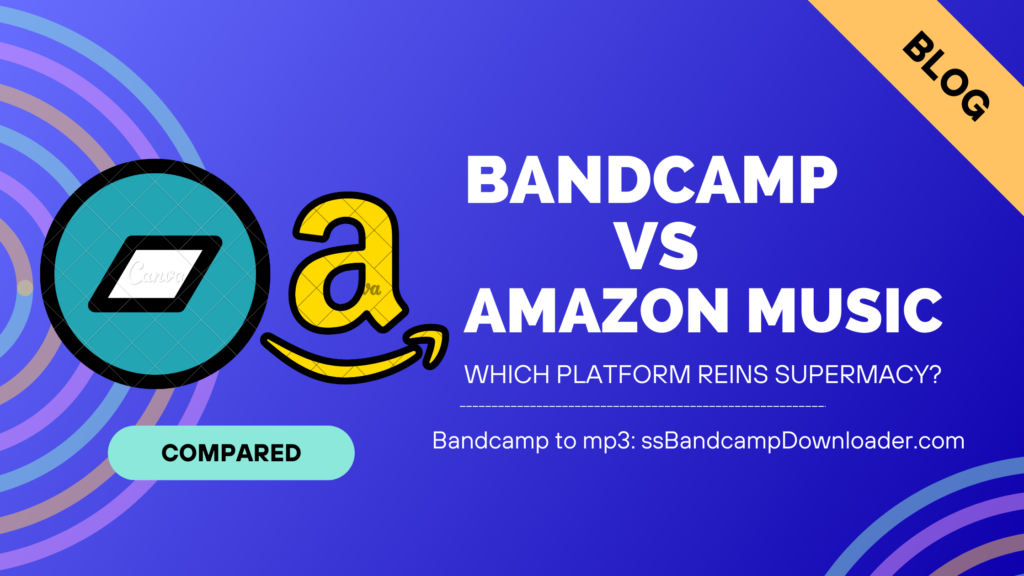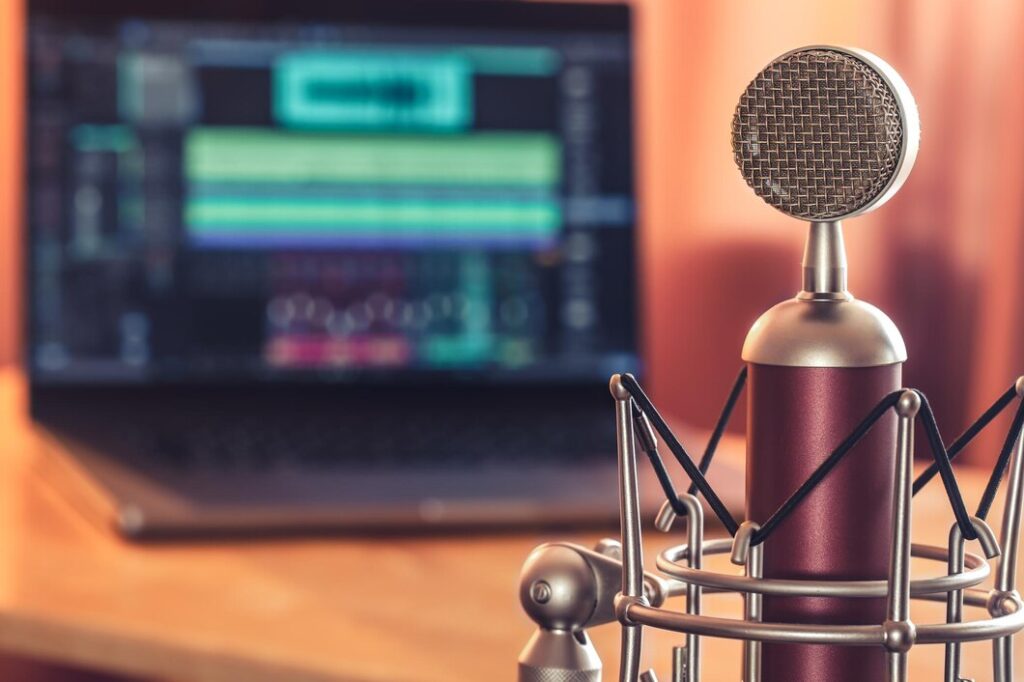In today’s digital age, the world of music consumption has evolved significantly, offering music enthusiasts a multitude of platforms to choose from. Among these, Bandcamp and Amazon Music stand as prominent contenders, each with its unique strengths and characteristics.
This article aims to dissect the distinctions between these two music services, providing a clear and concise comparison that will assist music lovers in making an informed choice. From their music catalogs and pricing models to user interfaces and audio quality, we will delve into every aspect to help you understand which platform aligns best with your musical preferences and requirements.

Bandcamp vs Amazon Music Compared
| Feature | Bandcamp | Amazon Music |
|---|---|---|
| Music Catalog | Focuses on independent and emerging artists, allowing them to sell and stream their music. Offers a wide range of genres, including niche and underground music. | Offers a vast catalog of mainstream music, including popular artists, labels, and extensive music libraries. |
| Streaming Subscription | Bandcamp offers a subscription service called “Bandcamp Plus” that includes unlimited streaming, offline listening, and exclusive releases. | Amazon Music offers several subscription tiers, including Amazon Music Unlimited with a vast library of songs and Amazon Prime Music, which is limited but included with an Amazon Prime subscription. |
| Free Tier | Bandcamp allows artists to offer free streaming of their music, but it may not be available for all songs. | Amazon Music offers a limited free tier with ads, especially for Amazon Echo device users. |
| Purchasing Music | Allows users to purchase music, albums, and merchandise directly from artists and labels. | Allows users to purchase music and albums, often with discounts for Amazon Prime members. |
| Offline Listening | Bandcamp Plus subscribers can download music for offline listening. | Amazon Music Unlimited and Prime Music subscribers can download songs and albums for offline listening. |
| Integration with Ecosystems | Limited integration with other streaming platforms and devices. | Seamlessly integrates with Amazon Echo, Alexa voice commands, and other Amazon services and devices. |
| Music Discovery | Offers various tools for music discovery, including tags, genres, and user-generated lists. | Amazon Music provides personalized recommendations based on user listening habits and offers curated playlists. |
| Exclusive Content | Features exclusive releases and early access to music from independent artists. | Occasionally offers exclusive content or early releases, mainly from major artists. |
| User-Generated Content | Allows artists to create and share their own playlists and content. | Users can create and share playlists, but it’s more artist-centric than user-centric. |
| Advertisements | Typically ad-free for listening, although some artists may include promotional content. | The free tier of Amazon Music includes ads. |
| Pricing | Bandcamp Plus: $10/month (unlimited streaming, offline listening) | Amazon Music Unlimited: Starts at $7.99/month for Prime members and $9.99/month for non-Prime members. Amazon Prime Music: Included with Amazon Prime membership. |
| Availability | Available worldwide but may have limited availability in some regions. | Available in many countries, with variations in the available features and content by region. |
| Platforms | Accessible through web browsers and dedicated apps for Android and iOS. | Compatible with web browsers, dedicated apps for various platforms, and Amazon Echo devices. |
Music Selection and Catalog
When it comes to music selection and catalog, Bandcamp and Amazon Music diverge in fundamental ways, catering to different music preferences and audiences.
Bandcamp: Bandcamp prides itself on being a haven for independent and niche artists. Its platform offers a vast array of music from emerging musicians, small record labels, and underground bands.
Whether you’re into indie rock, experimental electronic, or obscure genres, Bandcamp is a treasure trove for discovering unique and lesser-known music. It’s a platform that thrives on artistic diversity, making it a go-to choice for music connoisseurs seeking something beyond the mainstream.

Amazon Music: In contrast, Amazon Music boasts an extensive catalog that leans heavily towards mainstream and popular music. With a vast library of songs from major record labels and established artists, it’s the place to find chart-toppers and the latest hits.
Amazon’s reach in the music industry allows it to offer a broad spectrum of music genres, making it suitable for those who prefer well-known tracks and commercial hits.
In essence, your choice between Bandcamp and Amazon Music largely depends on your music taste. If you’re an enthusiast of underground and independent artists, Bandcamp’s unique selection might be your ideal choice. However, if you lean towards chart-toppers and well-known artists, Amazon Music’s comprehensive catalog is likely to be more appealing to you.
Pricing and Subscription Options
The pricing and subscription models of Bandcamp and Amazon Music are key factors that influence users’ decisions on which platform to choose. Let’s take a closer look at how these services differ in terms of cost and membership options.
Bandcamp: Bandcamp adopts an artist-friendly approach to pricing. It allows artists to set their own prices for music and merchandise, giving them more control over their earnings. Users can often find a range of pricing options on Bandcamp, including free downloads, “name your price,” and fixed prices for albums or tracks.
This model encourages direct support for artists, making it a preferred choice for those who want to contribute directly to musicians they love.
Additionally, Bandcamp offers an optional subscription service called “Bandcamp Pro,” which provides artists with more tools for customization and promotion.

Amazon Music: Amazon Music offers a more conventional subscription-based model with various tiers to choose from. The options typically include a free tier with limited features, a paid subscription for ad-free streaming (Amazon Music Unlimited), and a family plan for multiple users.
Pricing varies based on the plan selected and whether you’re an Amazon Prime member, as Prime members often receive discounts. This approach appeals to users who prefer a straightforward, all-inclusive monthly fee for unlimited access to a vast music catalog.
In summary, the decision between Bandcamp and Amazon Music in terms of pricing and subscription options comes down to your priorities. If you value supporting independent artists directly and enjoy flexibility in pricing, Bandcamp’s model may be more attractive. However, if you prefer the simplicity of a standard subscription service with access to a wide range of music, Amazon Music’s various plans might suit you better.
User Interface and Experience
User interface and overall user experience play a crucial role in determining the ease and enjoyment of using a music streaming or distribution platform. Let’s examine how Bandcamp and Amazon Music differ in this aspect.
Bandcamp: Bandcamp boasts a user-friendly and artist-centric design. Its website and mobile app prioritize simplicity and ease of navigation. Upon visiting an artist’s page, users are greeted with a clean layout that showcases the artist’s music, merchandise, and information.
The platform encourages music discovery with features like “related artists” and “fans also like,” helping users explore new sounds within their preferred genres. Bandcamp’s focus on supporting artists extends to its straightforward and transparent purchasing process, where users can easily buy music, vinyl, and merchandise directly from creators.

Amazon Music: Amazon Music, with its well-established e-commerce background, offers a polished and intuitive user interface. Its website and app are designed for seamless integration with Amazon’s ecosystem.
Users can easily access their Amazon Music libraries alongside their Amazon purchases. The platform emphasizes convenience, making it effortless to browse, search, and create playlists. Amazon Music also incorporates voice-assistant technology through Amazon’s Echo devices, allowing users to control music with voice commands.
In essence, the choice between Bandcamp and Amazon Music in terms of user interface and experience depends on your preferences. Bandcamp excels in providing a clean and artist-focused environment, ideal for music enthusiasts who value direct artist support and personalized music discovery.
On the other hand, Amazon Music’s user-friendly design and integration with the broader Amazon ecosystem appeal to those seeking convenience and a more streamlined experience.
Audio Quality
Audio quality is a significant consideration for music aficionados, and it can greatly affect the listening experience. Let’s compare the audio quality offered by Bandcamp and Amazon Music.
Bandcamp: Bandcamp takes pride in offering high-quality audio formats, particularly through its purchase and download options. When you purchase music on Bandcamp, you often have the choice to download tracks in lossless formats like FLAC (Free Lossless Audio Codec) or high-quality MP3.

This means you can enjoy music in its purest form with minimal compression, making it a top choice for audiophiles who prioritize pristine sound quality. Bandcamp’s commitment to providing high-resolution audio is a notable advantage for those who want the best listening experience.
Amazon Music: Amazon Music provides various audio quality settings to accommodate different preferences and network conditions. It offers standard quality (up to 256 kbps) for streaming, which is suitable for most users and works well even on slower connections.
For those who crave higher fidelity, Amazon Music also offers a premium tier with HD and Ultra HD streaming options. These formats offer superior audio quality, making it a competitive choice for audiophiles who want the best possible sound.
In summary, the choice between Bandcamp and Amazon Music regarding audio quality depends on your audio preferences and priorities. If you prioritize top-notch audio quality and have the equipment to appreciate it, Bandcamp’s lossless and high-quality download options may be more appealing. However, if you prefer streaming and want flexibility in audio quality, Amazon Music’s range of settings, including HD and Ultra HD, could better suit your needs.
Music Discovery and Recommendations
Music discovery and personalized recommendations are essential features that can enhance your overall music streaming experience. Let’s explore how Bandcamp and Amazon Music approach these aspects.
Bandcamp: Bandcamp fosters a unique approach to music discovery, primarily driven by its community of users and artists. The platform encourages artists to engage directly with their fans through features like artist profiles, blog posts, and message boards.
This level of interaction allows users to gain insights into an artist’s creative process, upcoming releases, and influences.
Additionally, Bandcamp promotes exploration by offering tags and genres, helping users discover new music that aligns with their tastes. It’s an ecosystem where word-of-mouth and genuine artist-fan connections often lead to exciting musical finds.
Amazon Music: Amazon Music leverages its extensive database and user behavior data to offer algorithm-based music recommendations. The platform analyzes your listening history and preferences to suggest tracks, artists, and playlists that align with your taste.
This personalized approach can be effective in introducing users to new music they might enjoy. Amazon Music also curates playlists and stations based on genres, moods, and activities, making it easy to find music for specific occasions or moods.
In summary, your choice between Bandcamp and Amazon Music regarding music discovery and recommendations depends on your preferred method of exploration. Bandcamp thrives on its community-driven approach, allowing you to connect with artists and discover music through tags and genres. On the other hand, Amazon Music’s algorithm-based recommendations can be beneficial if you appreciate tailored music suggestions based on your listening history.
Offline Listening and Device Compatibility
Offline listening and device compatibility are vital aspects for music enthusiasts who want to enjoy their favorite tunes on the go. Let’s delve into how Bandcamp and Amazon Music address these features.
Bandcamp: Bandcamp primarily functions as a web-based platform, and while it offers a mobile app, it’s important to note that offline listening capabilities are somewhat limited.
While you can download purchased music in various high-quality formats, Bandcamp’s streaming service doesn’t provide an official offline mode. This means you’ll need an internet connection to stream music through the Bandcamp app.

Amazon Music: Amazon Music offers robust offline listening options. Subscribers to Amazon Music Unlimited can download songs, albums, and playlists for offline playback. This feature is particularly beneficial for users who want to conserve mobile data or listen to music in areas with poor or no internet connectivity.
Amazon Music also supports a wide range of devices, including smartphones, tablets, desktop computers, and Amazon Echo devices, ensuring that you can access your music library and playlists across multiple platforms.
In summary, your choice between Bandcamp and Amazon Music for offline listening and device compatibility hinges on your specific needs. If offline access to your music library is a priority, especially for those with Amazon Echo devices, Amazon Music’s robust offline functionality may be more suitable.
However, if you primarily purchase and download music for offline listening, Bandcamp’s high-quality downloads offer a different approach to enjoying your favorite tracks.
Social and Community Features
Social and community features can enhance your music streaming experience by connecting you with fellow music enthusiasts and artists. Let’s compare how Bandcamp and Amazon Music incorporate these elements.
Bandcamp: Bandcamp places a strong emphasis on fostering a sense of community between artists and fans. It provides artists with tools to engage with their audience directly, such as the ability to post updates, share exclusive content, and interact with fans through messages and comments.
This level of engagement can create a more intimate connection between artists and their supporters. Additionally, Bandcamp encourages users to follow their favorite artists, allowing them to stay updated on new releases and events.
Amazon Music: Amazon Music offers a more integrated social experience through its integration with Amazon’s broader ecosystem. Users can share songs and playlists with friends via messaging platforms and social media, making it easier to connect over music preferences.
However, Amazon Music doesn’t emphasize direct artist-fan interaction to the same extent as Bandcamp. Instead, it relies on collaborative playlists and shared playlists as its primary social features.
In summary, your choice between Bandcamp and Amazon Music in terms of social and community features depends on whether you prioritize direct engagement with artists or prefer social sharing and collaborative playlist features.
Bandcamp’s artist-centric approach may be more appealing if you value a deeper connection with musicians, while Amazon Music’s integration with social sharing platforms may suit those who enjoy sharing music with friends and discovering new tracks through social connections.
Music Ownership and Rights
The aspect of music ownership and rights is crucial when considering a music platform, as it affects how you can use and enjoy the music you acquire. Let’s explore how Bandcamp and Amazon Music handle these factors.
Bandcamp: Bandcamp takes a unique approach to music ownership. When you purchase music on Bandcamp, you’re essentially buying a digital copy of the music file. This means you have more control over the music files you download, and you can store them on your devices, create backups, and transfer them as you see fit.
Bandcamp also allows artists to choose their own licensing terms, which can include granting permission for fans to use their music in certain ways, such as for non-commercial projects or YouTube videos. This flexibility in licensing empowers both artists and fans.
Amazon Music: Amazon Music operates under a licensing model, which means that when you subscribe to Amazon Music Unlimited or purchase songs through the platform, you don’t own the music files. Instead, you’re granted a license to stream or download those songs within the terms and conditions of your subscription.
This limits your ability to transfer or use the music outside of the Amazon Music ecosystem. It’s important to note that music acquired through Amazon Music is subject to DRM (Digital Rights Management) protection, further restricting its use on unauthorized devices or platforms.
In summary, the choice between Bandcamp and Amazon Music regarding music ownership and rights depends on your preferences for how you want to access and use your music. Bandcamp’s model provides more control and flexibility, allowing you to own and manage the music files you purchase. On the other hand, Amazon Music’s licensing model offers convenience for streaming but comes with restrictions on how you can use the music outside of the platform.
Conclusion | Amazon Music vs Bandcamp
In conclusion, the choice between Bandcamp and Amazon Music hinges on your music preferences and priorities.
Bandcamp excels in supporting independent artists, offering high-quality downloads, and fostering a close-knit community. It’s an ideal choice for those who value unique, niche music, and direct artist engagement.
On the other hand, Amazon Music provides convenience, a vast catalog of mainstream music, and robust offline listening options. It’s well-suited for users seeking an extensive music library with tailored recommendations.
Ultimately, your decision should align with your musical tastes, whether you prioritize supporting indie artists or prefer the ease and breadth of a mainstream music platform.
FAQs
Bandcamp stands out for its artist-centric approach. It empowers independent musicians, allowing them to set their own prices and control their content. This uniqueness fosters a diverse and niche music catalog, making it a go-to platform for discovering indie and lesser-known artists.
Yes, you can enjoy Bandcamp without making purchases. Many artists offer free downloads or “name your price” options, allowing you to access music without cost. Additionally, Bandcamp often hosts streaming events and artist showcases for free listening.
Yes, Amazon Music provides a free tier with limited features. However, to access the full catalog and enjoy an ad-free experience, you can subscribe to Amazon Music Unlimited, which offers various pricing plans based on your preferences.
Yes, Amazon Music Unlimited subscribers can download songs, albums, and playlists for offline listening. This feature is particularly useful when you want to enjoy music without an internet connection.
Yes, music acquired through Amazon Music is protected by DRM (Digital Rights Management). This means you can only use the downloaded music within the Amazon Music ecosystem and on authorized devices, limiting its transferability to other platforms or devices.
